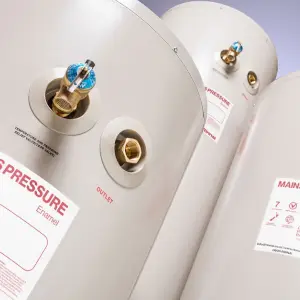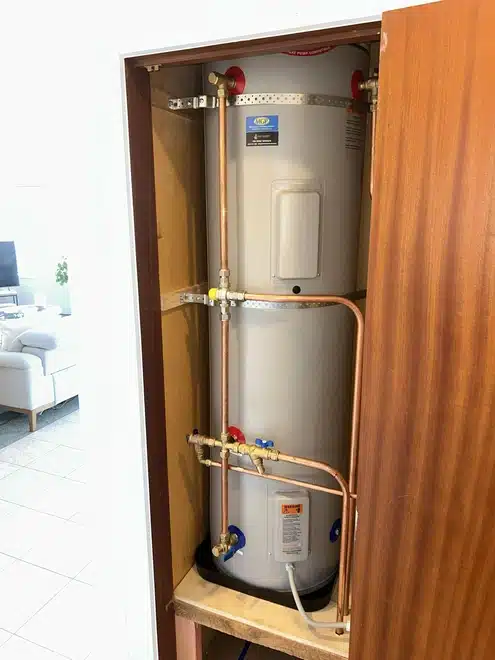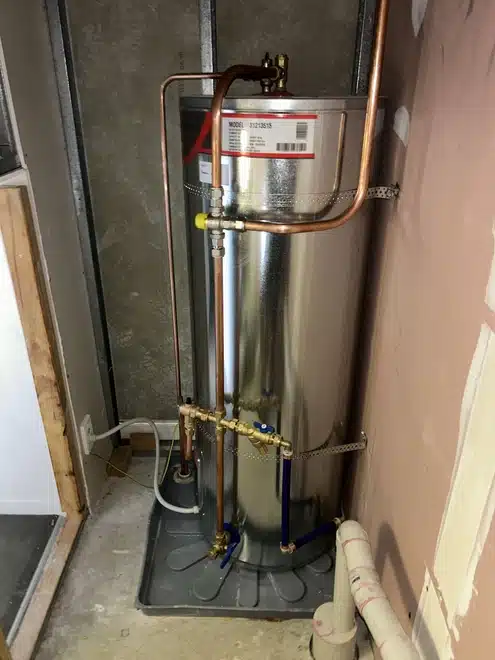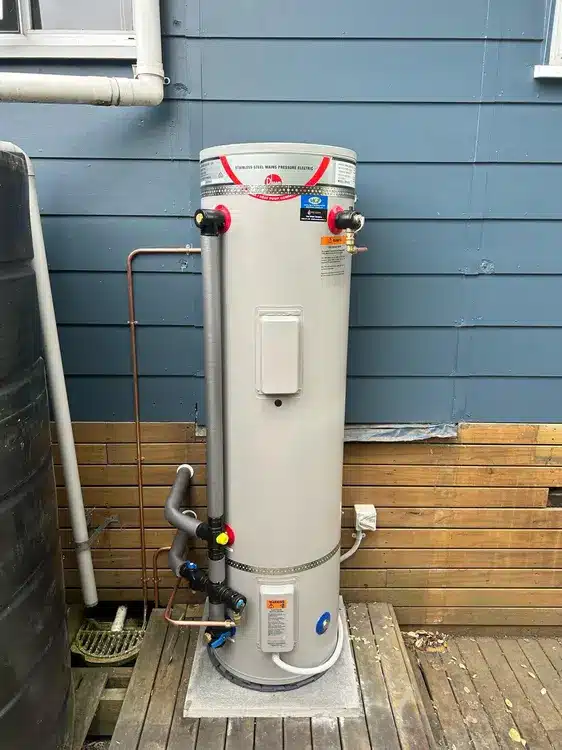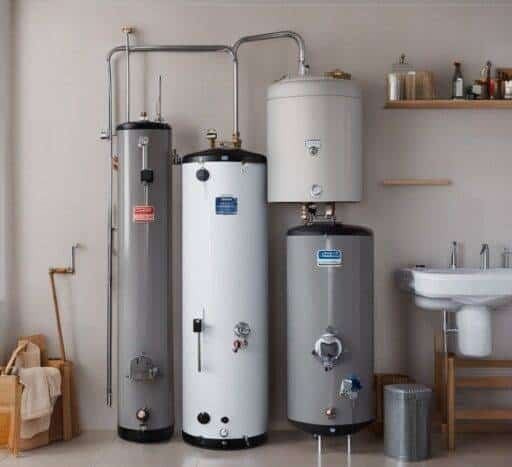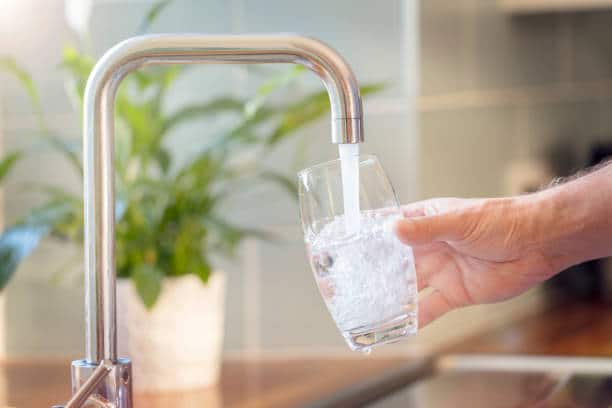The Basic Principles
If you own a hot water cylinder, it is important to be aware of how it works. It can provide much-needed assistance with maintenance and saving energy. At its most basic level, a hot water cylinder works by heating up water that sits inside an insulated tank. The water is heated by an energy source, usually either electricity, gas or solar power.
Once the water reaches the desired temperature, the cylinder switches off the heating element but retains the heat energy stored in the water due to the thick insulating outer jacket. This keeps the hot water hot until you turn on a hot tap and draw it out of the cylinder.
Insulation is Key
The key to a hot water cylinder’s ability to keep water hot lies in the quality and thickness of its insulation. Most modern cylinders have a PU foam insulation layer between 50mm to 90mm thick wrapped around the inner tank. This provides excellent heat retention by minimising temperature loss. PU foam is chosen for its lightweight, moisture resistant and high insulation rating properties. The thicker the insulation layer, the better its heat retention abilities.
Stratification Maximises Efficiency
Another important feature that helps maximise efficiency is internal stratification. When new cold water enters the bottom of the cylinder to replace hot water drawn out from the top, it has a lower temperature and higher density than the existing hot water. Natural physics causes these two temperature zones to form layers within the cylinder rather than mix together.
Hot water rises to the top with the coolest water settling near the bottom. This phenomenon is called thermal stratification. An effective hot water cylinder design will preserve this natural temperature layering as much as possible.
Materials Matter
The actual inner tank holding the water is usually made from stainless steel, enamelled steel or copper. Each material offers different heat transfer, corrosion resistance and longevity characteristics. Stainless steel is the best all-rounder while copper offers the superior heat transfer. Enamel coatings provide corrosion protection for steel tanks. The type of material used impacts heat retention capabilities as well as cylinder lifespan.
Smart Cylinder Technologies
Modern electronic cylinders incorporate smart technologies for greater energy efficiency and performance. Features like timer and temperature controls, auto-pump circulation, touch screen user interfaces, Wi-Fi connectivity and integrated solar heating boost efficiency in various ways. For example, you can think about using a Smart Wi-Fi water heater to keep track of energy usage.
Timers, sensors and pumps help moderate energy usage while solar integration reduces daytime heating demands. Smart cylinders continually monitor water conditions and activate heating only when required.
Integrating smart cylinder and home energy management paves the way toward the self-regulating home. Homeowners stay informed while algorithms and predictive analysis ensure hot water flows in the most economical and convenient manner.
Location Makes a Difference
Installing your hot water cylinder as close as possible to the most frequently used hot water sources will boost efficiency and performance. This is due to lower heat losses from shorter pipe runs between cylinder and taps. Cylinders located in external garages or downstairs from upstairs bathrooms result in greater cooling of water held in the pipes between.
Perfect Temperature Settings
Maintaining cylinder water temperature between 60 to 65°C is recommended best practice. This high enough temperature kills off harmful bacteria like Legionella that can accumulate at lower temperatures. But not so hot that it risks scalding or wastes too much standby energy reheating cooler water entering the cylinder. Striking the right temperature balance is key to efficiency and safety.
Regular Maintenance Pays Off
Like most water-based systems, some occasional maintenance helps optimise your cylinder’s operation. Annual checks, flushing mineral build-up from the tank, replacing anodes and Limescale control provide longer working life along with energy and cost savings.
Why Regular Maintenance is Essential
Like other water-based appliances, hot water cylinders require periodic servicing to optimise efficiency and longevity. Annual maintenance checks should assess and address the following:
Flushing out mineral deposits that accumulate inside the cylinder tank over time
Replacing magnesium or aluminium anode rods which corrode before the inner tank
Checking insulation integrity and patching gaps or tears
Removing build up in safety relief valves which can seize up over time
Testing control thermostats and heating elements making sure they activate as required
Checking pipes and valves for leaks and tightening up connections
Technicians can also adjust control settings if necessary to align with household usage patterns. Updating hot water disinfection or descaling treatments is another proactive measure.
Final Words
When it comes to delivering a constant stream of hot water without waste or fuss, today’s hot water cylinders have the technologies and design smarts to handle demand while maximising efficiency. With improved insulation, smarter controls and strategic placement, relax knowing your cylinder has hot water convenience covered. Investing in regular hot water cylinder maintenance improves safety, efficiency and lifespan – saving homeowners money over the long term.
Use our contact us page to reach us and we will be more than happy to discuss your hot water situation. Or give us a call on 0800 497658.
At Hot Water Solutions all we do is hot water!

